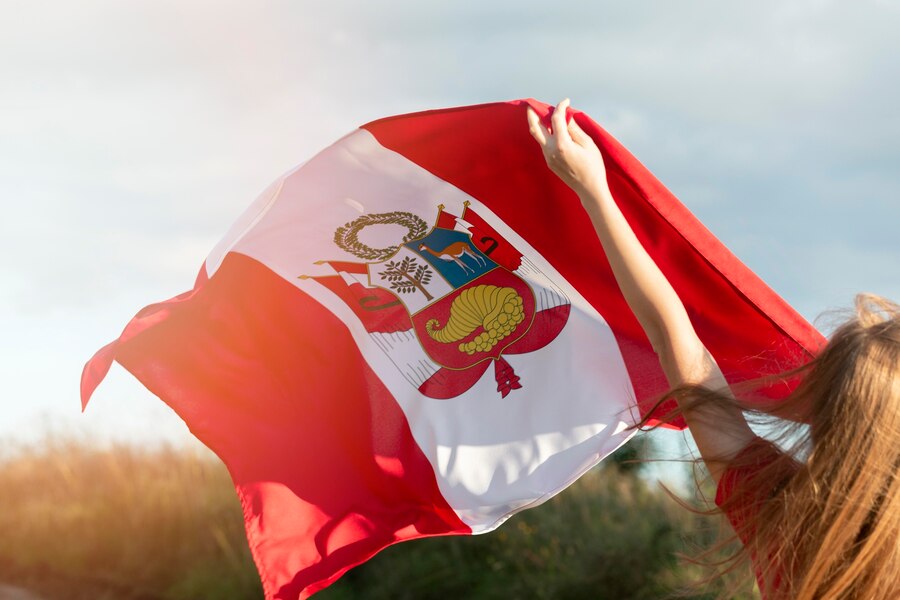National flags serve as powerful symbols of a country’s identity, embodying the history, culture, and values of a nation. The Chilean flag is no exception. With its distinctive design and rich symbolism, the Chilean flag holds a special place in the hearts of its citizens. Let’s delve into the fascinating story behind this emblem of Chilean pride.
History of the Chilean Flag
Before the adoption of the current flag, Chile went through several iterations of national symbols. The first known flag was the Patria Vieja flag, used from 1812 to 1814 during Chile’s struggle for independence from Spanish rule. This flag featured three horizontal stripes in blue, white, and yellow.
Adoption of the Current Flag
The current Chilean flag, known as “La Estrella Solitaria” or “The Lone Star,” was officially adopted on October 18, 1817. This was a significant period, as Chile was in the final stages of its fight for independence, which was officially achieved in 1818. The flag was designed to inspire unity and national pride among Chileans.
Historical Significance
The flag’s adoption marked a turning point in Chile’s history. It not only represented the country’s newfound independence but also symbolized the aspirations and struggles of its people. The flag has since become a potent symbol of national identity and patriotism.
Colors and Their Meanings
The Chilean flag consists of two horizontal bands of white and red, with a blue square in the upper left corner containing a white star. Each element of the flag holds deep significance:
Blue: Represents the sky and the Pacific Ocean that borders Chile.
White: Symbolizes the snow-covered Andes Mountains.
Red: Honors the blood shed by those who fought for Chile’s independence.
The Star: La Estrella Solitaria
The lone star in the blue canton stands for a guide to progress and honor. It signifies the values of independence, unity, and the lofty aspirations of the Chilean people.
Comparison with Other Flags
The Chilean flag is often compared to the flag of Texas due to their similar designs. However, despite their visual resemblance, each flag has unique meanings and historical contexts.
National Celebrations
The Chilean flag is prominently displayed during national holidays, especially on September 18, which is Chile’s Independence Day, known as Fiestas Patrias. During this time, the country is adorned with flags, and citizens engage in traditional dances, parades, and festivities.
Use in Art and Media
The flag also features prominently in Chilean art and media. It appears in various forms, from paintings and murals to movies and television shows, often symbolizing patriotism and national pride.
Representation in Sports
In the realm of sports, the Chilean flag is a unifying symbol. Whether it’s football, tennis, or other international competitions, Chilean athletes proudly wave their flag, rallying support and celebrating their heritage.
Flag Etiquette
Chile has specific protocols regarding the display and handling of its flag. It should be hoisted at sunrise and lowered at sunset. When displayed with other flags, the Chilean flag must hold the position of honor.
Laws Governing the Flag
The Chilean government has enacted laws to protect the integrity of the national flag. These laws dictate proper usage, including the circumstances under which the flag should be flown at half-mast.
Penalties for Misuse
Misuse of the flag, such as desecration or improper display, can result in penalties. These laws ensure that the flag is treated with the respect and dignity it deserves.
Role During Natural Disasters
Chile, a country prone to natural disasters like earthquakes and tsunamis, often rallies around its flag in times of crisis. The flag becomes a symbol of resilience and unity, providing hope and strength to those affected.
Political Movements and Protests
The Chilean flag has also been a prominent feature in political movements and protests. It serves as a powerful symbol of solidarity and resistance, reflecting the people’s demands for change and justice.
Symbol of Unity
In both triumph and adversity, the Chilean flag stands as a symbol of unity. It represents the collective spirit of the Chilean people, their struggles, and their victories.
Comparison with the Texas Flag
The resemblance between the Chilean and Texas flags often leads to comparisons. Both feature a single star and similar color schemes, but they have distinct meanings and origins. While the Texas flag symbolizes the state’s history and identity, the Chilean flag represents national independence and the natural beauty of Chile.
Differences and Similarities with Other Latin American Flags
The Chilean flag shares similarities with other Latin American flags, such as the use of red, white, and blue. However, its unique design elements, like the lone star and the specific symbolism of the colors, set it apart from its neighbors.
The Flag Today
Today, the Chilean flag remains a vital part of national identity. It is flown proudly across the country, from government buildings to private homes, reflecting the enduring spirit of the nation.
Public Perception
The flag is widely respected and cherished by Chileans. It is seen not just as a symbol of the state, but as a representation of the collective aspirations and history of its people.
International Recognition

Internationally, the Chilean flag is recognized as a symbol of a proud and resilient nation. It often appears in global forums, sporting events, and international gatherings, showcasing Chile’s heritage and unity.
Conclusion
The Chilean flag is more than just a piece of fabric; it is a powerful emblem of national pride, history, and identity. From its historical roots to its modern-day significance, the flag encapsulates the spirit of the Chilean people. Whether during celebrations, crises, or everyday life, the Chilean flag continues to unite and inspire its citizens, standing as a testament to their enduring legacy.
FAQs
What does the star on the Chilean flag represent?
The star, known as La Estrella Solitaria, represents a guide to progress and honor, symbolizing the values of independence and unity.
When was the current Chilean flag adopted?
The current Chilean flag was officially adopted on October 18, 1817.
How is the Chilean flag used in national celebrations?
During national celebrations, especially Fiestas Patrias on September 18, the Chilean flag is prominently displayed across the country in homes, streets, and public buildings.
What are the legal protocols for displaying the Chilean flag?
The flag should be hoisted at sunrise and lowered at sunset. When displayed with other flags, the Chilean flag must hold the position of honor. Misuse or improper display can result in penalties.
How does the Chilean flag compare to other national flags?
While it shares similarities with other flags, like the Texas flag, the Chilean flag has unique elements such as the lone star and specific color symbolism, setting it apart and representing Chile’s unique heritage and values.
